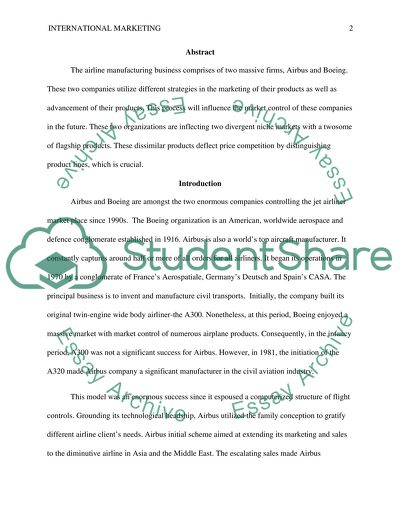Cite this document
(“International Marketing (Airbus and Boeing) Essay”, n.d.)
Retrieved from https://studentshare.org/marketing/1397431-international-marketing
Retrieved from https://studentshare.org/marketing/1397431-international-marketing
(International Marketing (Airbus and Boeing) Essay)
https://studentshare.org/marketing/1397431-international-marketing.
https://studentshare.org/marketing/1397431-international-marketing.
“International Marketing (Airbus and Boeing) Essay”, n.d. https://studentshare.org/marketing/1397431-international-marketing.


